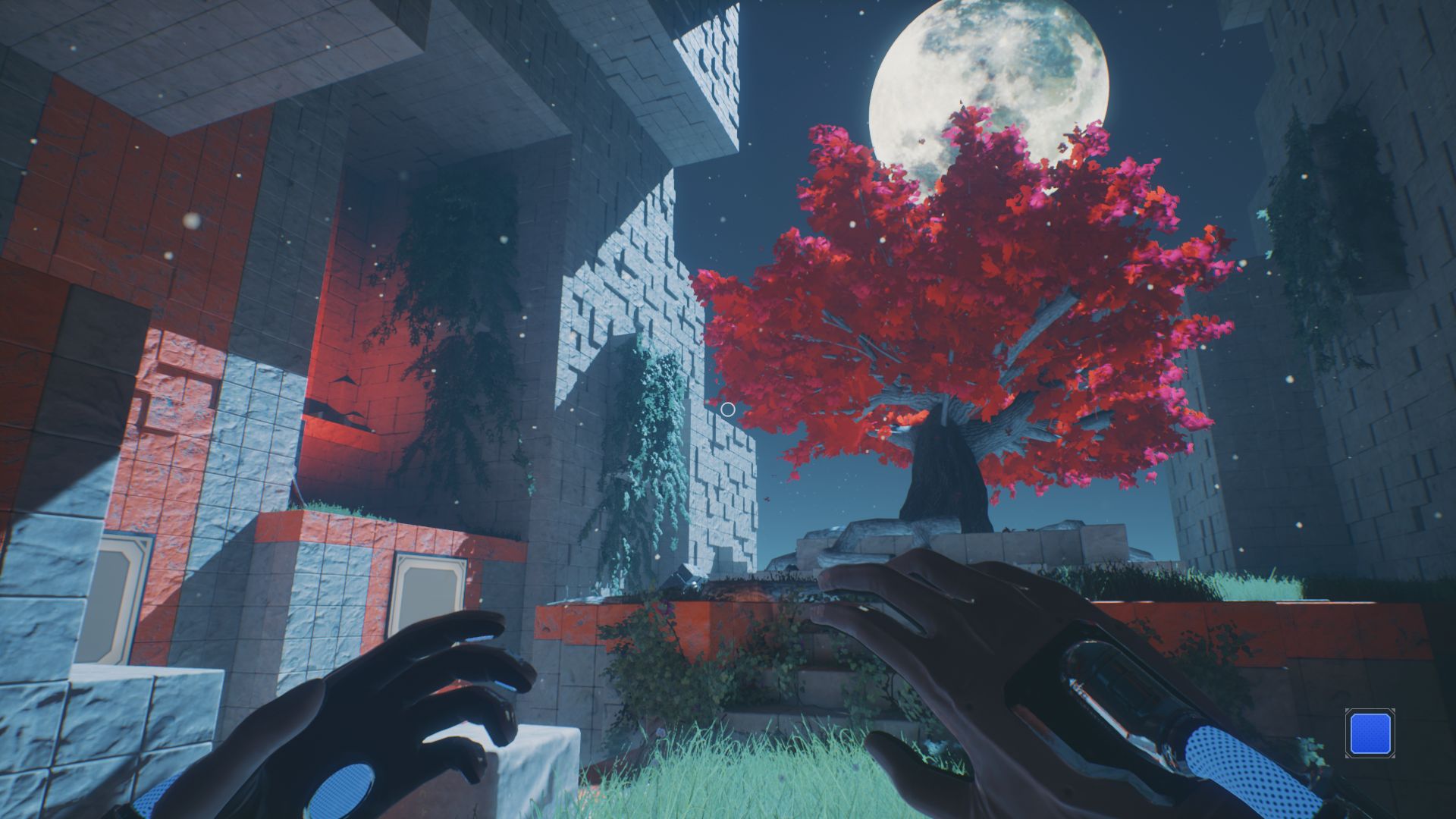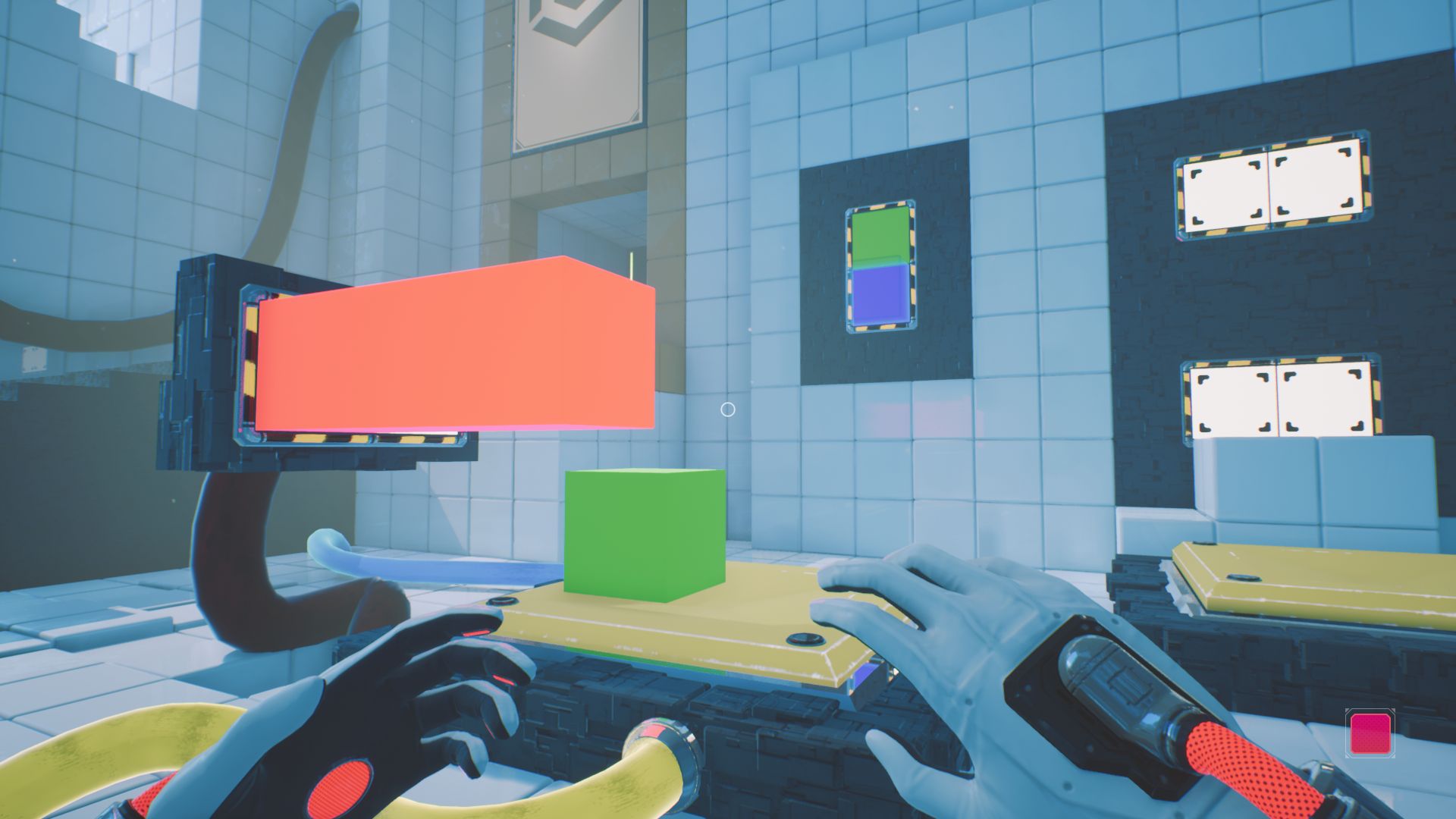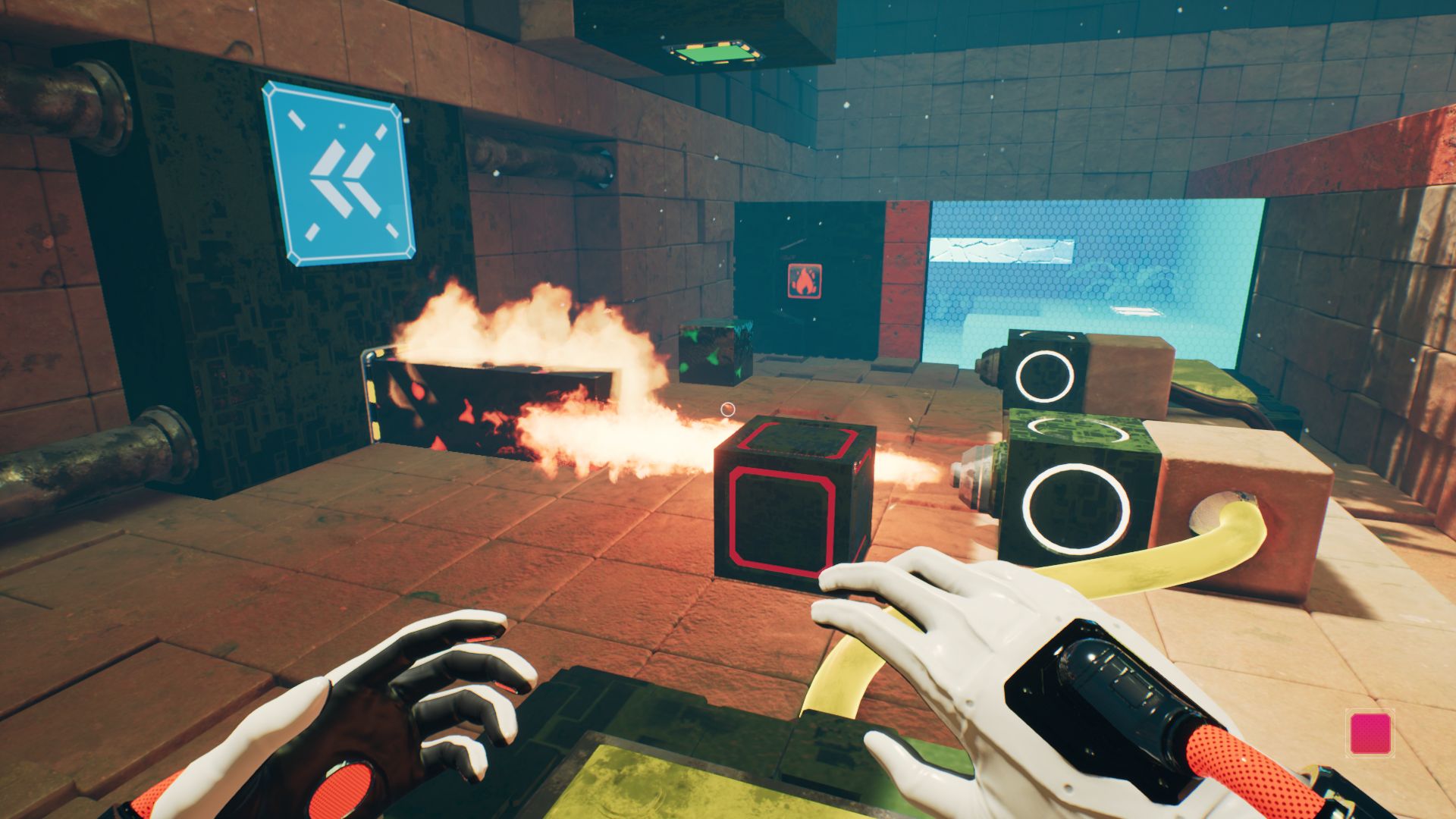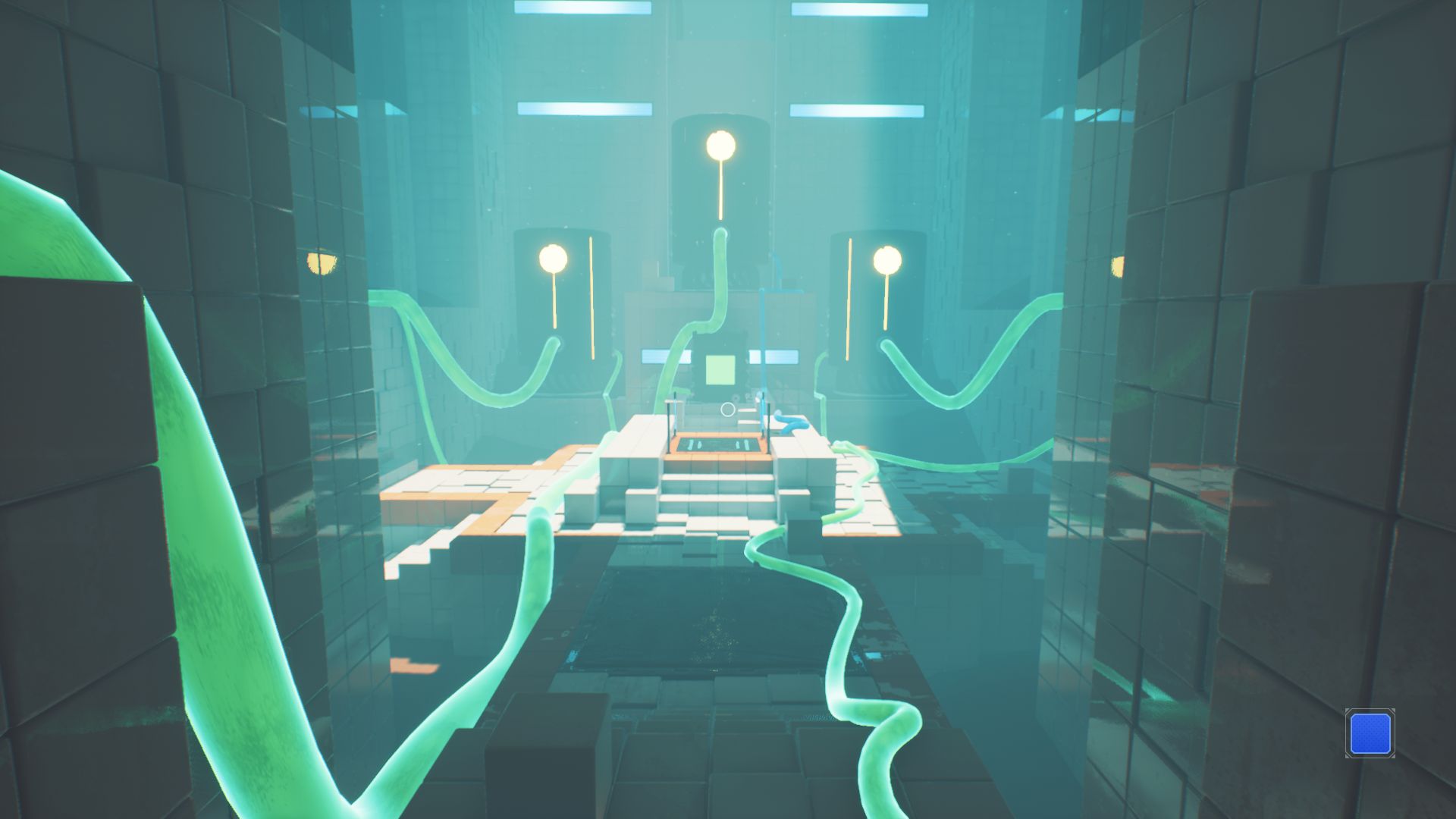Q.U.B.E. 2 Review
All the building blocks of a good puzzler
When Q.U.B.E. released in late 2011, it managed to stand tall against obvious comparisons. Despite the fact that it didn’t have a story, it was a success because of strong puzzle design and interesting mechanics involving colored blocks. Nevertheless, Toxic Games thought it fitting to add a story with the Director’s Cut version that came out two years later. The sequel, Q.U.B.E. 2, also has a story at launch, however it is obscurely told. The new game further changes the mechanics slightly and introduces a few new elements. Like its predecessor, Q.U.B.E. 2 stacks up mainly because of its colored box puzzles and not for its narrative.

While the sequel has a story, it is cryptic and minimal. There is not much context as to how or why you, as Amelia Cross, come to be inside a giant alien structure made out of nice looking cubes. A woman called Emma Sutcliffe will guide you via radio, and the first task involves powering a generator to ascend an elevator so you can be transported back to safety—wherever that is. Cube-holding statues can be found inside the monolithic structure, and touching them will reveal jumbled radio messages that don’t make sense. A male voice becomes prominent over the radio too, although he also skirts around clarity for a good while. Perhaps the only interesting part of the story involves deciphering the truth from the communications. The story exists mainly to provide intrigue rather than to enhance the experience.
The six hour adventure is not just one puzzle chamber after another; it’s more organic and the puzzle areas are dissimilar in shape. Powering generators means returning back to central hubs after interacting with consoles in the adjacent rooms. The second half of the game is refreshing because it is even less linear, with side areas that can be completed in any order. You won’t have to worry about getting lost in the bizarre cube world; it’s easy to know where the next puzzle is located because of glowing power cables and other visual guides.
For the puzzles, the bulk of the challenge relates to exploiting different colored blocks to get through areas. There are only three colors in the sequel: blue makes a springboard; red creates a retractable long block for pushing things or creating bridges; and green brings a box into the world that can weigh down switches. Like the final sector in the first game, the puzzle rooms don’t have these colors in pre-existing locations; first they must be placed by hand—by glove in fact.

The gloves you wear will put the colored blocks into any of the blank spaces in the world. Finding the right spot for each color is half the battle. All block types are granted to the player one at a time after basic tutorials, so if you played the first game, these early sections might be slow going. Later in the game, you'll be able to place multiples of the same color, drastically increasing the possible combinations. As such, the puzzle structure is a bit different than the original while still retaining the basic concepts.
After you get used to the basics of the glove, other mechanics are introduced in piecemeal fashion. Metal balls will roll and knock through barricades. Magnets will act on both green boxes and balls; fortunately they work better than in the original game. Platforms can be rotated and shifted to transfer objects and yourself across chasms. Even industrial fans will blow things in one direction. The last of the introduced mechanics, oil, is perhaps the most interesting and new to the series. Nozzles will spray the black liquid over the green and red blocks to reduce their friction coefficient. Anything covered in oil can also catch fire for a brief time and will burn down certain walls on contact. Each of these secondary mechanics is used consistently and effectively.
Given all of the elements, puzzle areas can resemble Rube Goldberg machines as balls bounce off blue springboards, catch fire, and transfer momentum to a box covered in oil. And, sometimes, you become part of these strange contraptions, standing on a box as it gets launched into the air from a repelling magnet. Many puzzles require active participation by placing colors (or deleting boxes) on the fly, although fast reflexes are rarely essential. While the solutions often involve a lot of physics interaction, the level design constraints ensure things play out as intended. Occasionally falling off moving boxes is the only notable blemish in an otherwise well tested experience.

The difficulty curve is a nice gradient. Early on, the puzzle areas look more complicated than they really are. It's somewhat overwhelming; room sizes are large (and not just square in shape) with many possible permutations. However, it usually becomes clear how things go together based on the placement of blank spaces. Putting a blue springboard under a green square will propel the conjured block directly opposite. Using a red block to knock an oil-coated ball along the ground was also a fairly standard trick. The game teaches the player these basic ideas and then uses them progressively.
Towards the end, the challenge hits some devilish highs, but not because the areas get bigger or have additional moving parts. On the contrary, the compact puzzle design can lull players into false confidence. It might be obvious what needs to happen, but the elements don’t appear to allow it. Some out-of-the-box thinking is definitely required, which leads to that one clue that changes everything. Like standing on a red block and jumping across a moving gap because there was no way to press all switches at once. There were many of these satisfying ‘aha’ moments from the dastardly challenges and they certainly made for a worthwhile experience.
Unreal Engine 4 is responsible for rendering all the cubes and it is certainly put to good use. Performance was great throughout, apart from some weird camera issues when streaming zones. The sequel features more grandiose rooms compared to the cramped interiors of the first game. Like Portal 2, a good portion of the adventure happens in rooms that have been taken over by nature. These overgrown areas look nice, but, sadly, the game has none of those freaky moving blocks that were compelling in the first game. The haunting monolith structure deserved something more akin to horror, or at least strangeness, to offset the clinical puzzles.

Q.U.B.E. 2 is a clever sequel that does many things right when it comes to puzzles. Placing colored blocks into blank spaces is the main way to progress, and finding their correct location is the key. Additional devices, like magnets and burning oil, help to setup Rube Goldberg contraptions that are fun to initiate and witness. Despite the potential for things to go haywire, the level constraints ensure there is no need to fight with the physics. The sequel does have a story, but it's too obtuse and plain given the weird structure you explore. There's definitely a good challenge to be found in the last few hours that will make the whole game worth it. With clever puzzles and consistent use of all its devices, Q.U.B.E. 2 is a refined sequel that stacks up against the original.
 Comments
Comments















